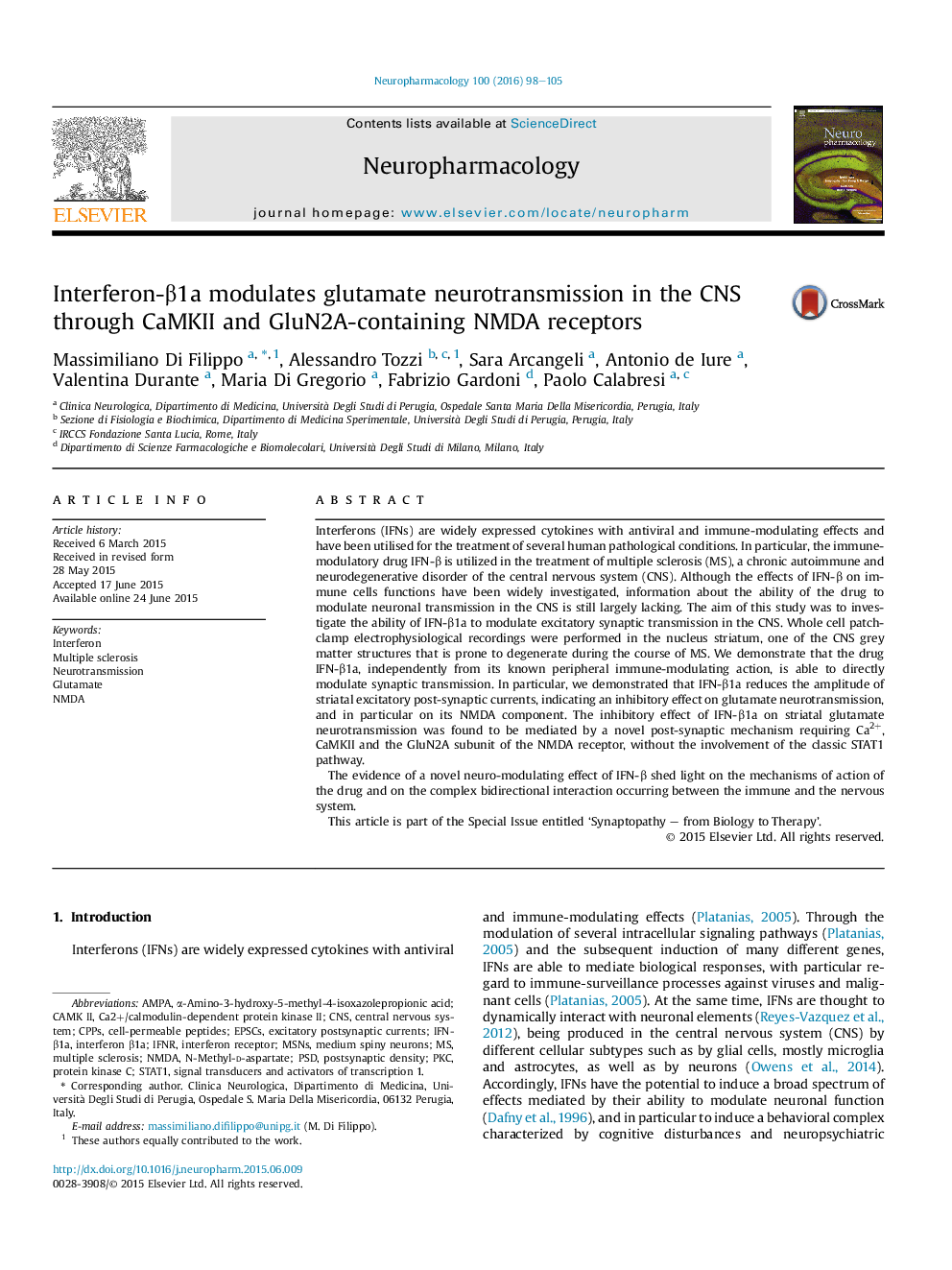| کد مقاله | کد نشریه | سال انتشار | مقاله انگلیسی | نسخه تمام متن |
|---|---|---|---|---|
| 5813623 | 1556615 | 2016 | 8 صفحه PDF | دانلود رایگان |

- IFN-β1a reduces striatal excitatory postsynaptic currents (EPSCs) of MSNs.
- FN-β1a synaptic effects depend on the level of post-synaptic intracellular calcium.
- FN-β1a-mediated EPSC reduction involves the GluN2A-containing NMDAR.
- CAMKII is involved in the IFN-β 1a-mediated EPSC reduction of MSNs.
- The STAT1 pathway is not involved in the IFN-β 1a-mediated EPSC reduction.
Interferons (IFNs) are widely expressed cytokines with antiviral and immune-modulating effects and have been utilised for the treatment of several human pathological conditions. In particular, the immune-modulatory drug IFN-β is utilized in the treatment of multiple sclerosis (MS), a chronic autoimmune and neurodegenerative disorder of the central nervous system (CNS). Although the effects of IFN-β on immune cells functions have been widely investigated, information about the ability of the drug to modulate neuronal transmission in the CNS is still largely lacking. The aim of this study was to investigate the ability of IFN-β1a to modulate excitatory synaptic transmission in the CNS. Whole cell patch-clamp electrophysiological recordings were performed in the nucleus striatum, one of the CNS grey matter structures that is prone to degenerate during the course of MS. We demonstrate that the drug IFN-β1a, independently from its known peripheral immune-modulating action, is able to directly modulate synaptic transmission. In particular, we demonstrated that IFN-β1a reduces the amplitude of striatal excitatory post-synaptic currents, indicating an inhibitory effect on glutamate neurotransmission, and in particular on its NMDA component. The inhibitory effect of IFN-β1a on striatal glutamate neurotransmission was found to be mediated by a novel post-synaptic mechanism requiring Ca2+, CaMKII and the GluN2A subunit of the NMDA receptor, without the involvement of the classic STAT1 pathway.The evidence of a novel neuro-modulating effect of IFN-β shed light on the mechanisms of action of the drug and on the complex bidirectional interaction occurring between the immune and the nervous system.This article is part of the Special Issue entitled 'Synaptopathy - from Biology to Therapy'.
Journal: Neuropharmacology - Volume 100, January 2016, Pages 98-105